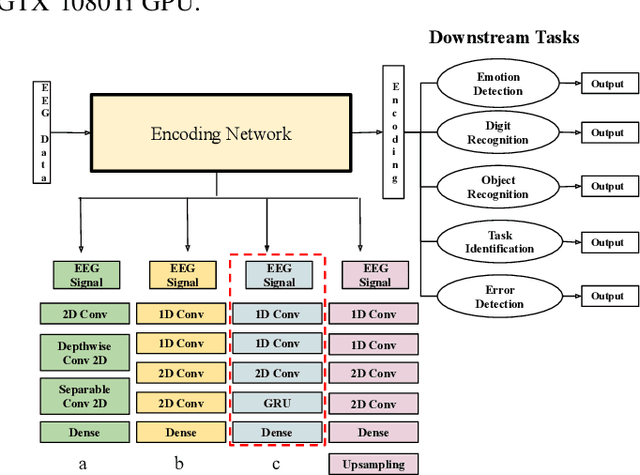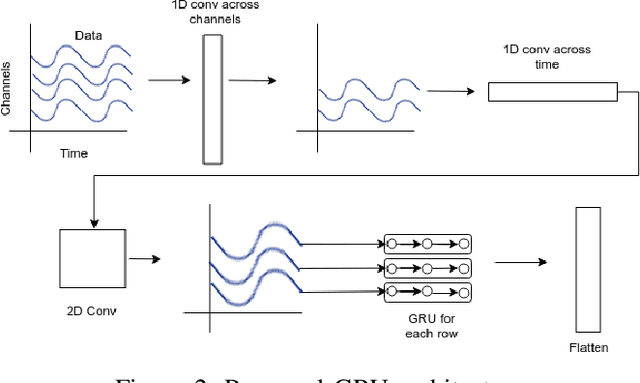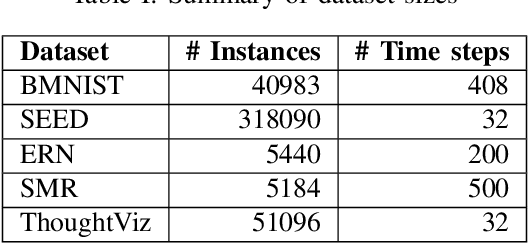Viresh Gupta
Adversarial Attack on Network Embeddings via Supervised Network Poisoning
Feb 14, 2021



Abstract:Learning low-level node embeddings using techniques from network representation learning is useful for solving downstream tasks such as node classification and link prediction. An important consideration in such applications is the robustness of the embedding algorithms against adversarial attacks, which can be examined by performing perturbation on the original network. An efficient perturbation technique can degrade the performance of network embeddings on downstream tasks. In this paper, we study network embedding algorithms from an adversarial point of view and observe the effect of poisoning the network on downstream tasks. We propose VIKING, a supervised network poisoning strategy that outperforms the state-of-the-art poisoning methods by upto 18% on the original network structure. We also extend VIKING to a semi-supervised attack setting and show that it is comparable to its supervised counterpart.
Detecting and Characterizing Extremist Reviewer Groups in Online Product Reviews
Apr 13, 2020



Abstract:Online marketplaces often witness opinion spam in the form of reviews. People are often hired to target specific brands for promoting or impeding them by writing highly positive or negative reviews. This often is done collectively in groups. Although some previous studies attempted to identify and analyze such opinion spam groups, little has been explored to spot those groups who target a brand as a whole, instead of just products. In this paper, we collected reviews from the Amazon product review site and manually labelled a set of 923 candidate reviewer groups. The groups are extracted using frequent itemset mining over brand similarities such that users are clustered together if they have mutually reviewed (products of) a lot of brands. We hypothesize that the nature of the reviewer groups is dependent on 8 features specific to a (group, brand) pair. We develop a feature-based supervised model to classify candidate groups as extremist entities. We run multiple classifiers for the task of classifying a group based on the reviews written by the users of that group, to determine if the group shows signs of extremity. A 3-layer Perceptron based classifier turns out to be the best classifier. We further study the behaviours of such groups in detail to understand the dynamics of brand-level opinion fraud better. These behaviours include consistency in ratings, review sentiment, verified purchase, review dates and helpful votes received on reviews. Surprisingly, we observe that there are a lot of verified reviewers showing extreme sentiment, which on further investigation leads to ways to circumvent existing mechanisms in place to prevent unofficial incentives on Amazon.
Universal EEG Encoder for Learning Diverse Intelligent Tasks
Nov 26, 2019



Abstract:Brain Computer Interfaces (BCI) have become very popular with Electroencephalography (EEG) being one of the most commonly used signal acquisition techniques. A major challenge in BCI studies is the individualistic analysis required for each task. Thus, task-specific feature extraction and classification are performed, which fails to generalize to other tasks with similar time-series EEG input data. To this end, we design a GRU-based universal deep encoding architecture to extract meaningful features from publicly available datasets for five diverse EEG-based classification tasks. Our network can generate task and format-independent data representation and outperform the state of the art EEGNet architecture on most experiments. We also compare our results with CNN-based, and Autoencoder networks, in turn performing local, spatial, temporal and unsupervised analysis on the data.
 Add to Chrome
Add to Chrome Add to Firefox
Add to Firefox Add to Edge
Add to Edge